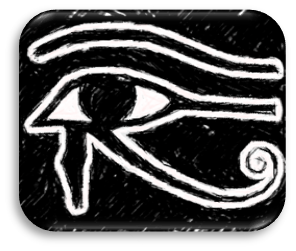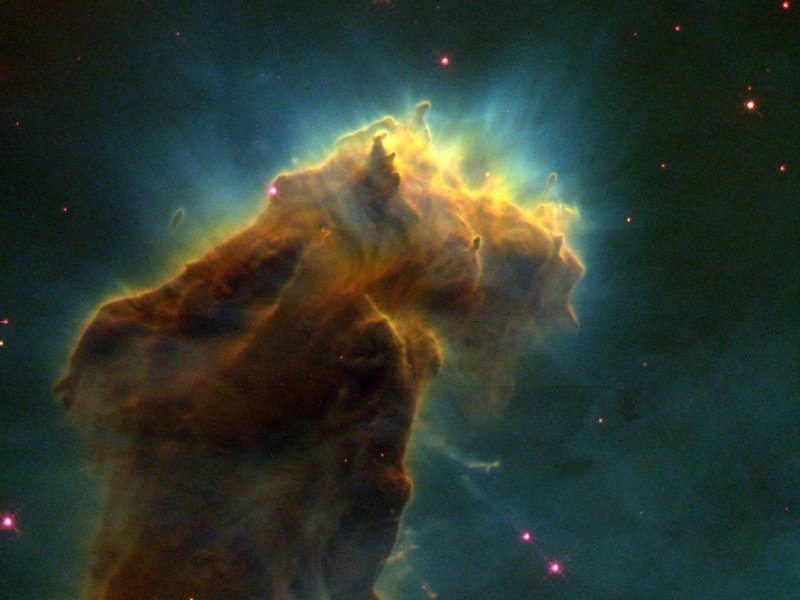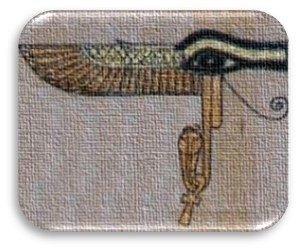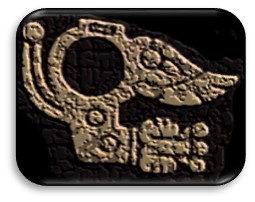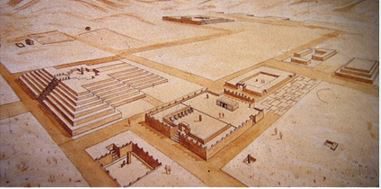Enoch’s legacy is an amazingly rich enigma. At various points in history, Enoch has been renowned as a patriarch, a sage, a prophet, an immortal, and even a god. In the Lost Book of Enoch, the archangels refer to him twice as the ‘son of man’, a title bestowed on Christ, Atum, Horus, and Marduk. To the Hebrews, Enoch was known as “the lesser Yahweh.” The books attributed to his name demonstrate a knowledge of the sciences that would have made him equivalent to the great Egyptian god Thoth or the Hellenic god Hermes. Quintus Septimius Florens Tertullianus, known as the “Father of Western Theology” considered Enoch’s work to be Holy Scripture. At some point in ancient history, his social impact would have been comparable to such modern era figures as Christ, Martin Luther, or Mohammed. Unfortunately, his writings were declared ‘apocryphal’ and banned by the Christian Council of Laodicea in 364 AD. His works were largely forgotten for the next 1500 years. Sadly, most scholarly interest in the books attributed to him remains limited to his prophetic statements about the coming of the Hebrew Messiah. His travels and contributions to creation mythology are totally dismissed. Five books have been written about the locations of his travels, with none of them being conclusive.
The world has ignored Enoch’s contributions to history because his record was erased, much as the records of the old gods was removed from temple walls and ancient libraries. The task undertaken in this volume is to understand his journey, and to place that journey in its proper historical perspective. To accomplish that, Enoch’s journey and his “place in time” need to be validated. The research which tells the reader when Enoch lived – and where he saw the house of god – also provides a compelling case that Enoch’s journey to the House of God was to the same geographic location as the home of the gods described in the mythologies of Mesopotamia, Egypt and Mesoamerica. According to the description provided by Enoch, the House of the Hebrew god was in the same location as the House of the Egyptian, Sumerian, and Mesoamerican gods of creation. This was generally known as the Garden of Eden. Enoch’s description of events of his time – such as the imprisonment of the Pleiades, or the sun rising in the west – corresponds to those same mythologies equally as well, which indicates that the timeframe of Enoch is commensurate with the timeframe of multiple mythologies that describe the “creation” of man.
Putting a date on the events surrounding the mythological ‘creation of man’ has been exceptionally problematic because it requires dating the destruction of the fabled Atlantis, which, according to ancient historians occurred with the Great Deluge of Noah, (as documented in Chapters II and X). That date, much less the existence of Atlantis, have been disputed for centuries. There is a consensus in major mythologies that the ‘separation of light and darkness’ which occurs prior to the creation of man is followed by three floods, all of which pre-date the Great Deluge of Biblical notoriety. This series of floods is critical to the dating of Enoch because Enoch, who is the great-grandfather of Noah, predicts the Great Deluge and provides compelling testimony that the Great Deluge and the Destruction of Atlantis are the same event. Enoch’s prophetic stance on the Great Deluge and the punishment of man is a similar theme in the classics of ancient literature: Enûma Eliš, the myths of Ninhursag and Asag, the Pyramid Texts, Rig-Veda, Ramayana, the Greek Theogony, The Egyptian rebellion, Popol Vuh and more.
Having a realistic time frame for Enoch and these other creation mythologies is critical to validating the primary thesis of this book: that Enoch visited the House of God which was the Temple of Puma Punku, in Tihuanacu, Bolivia on the shores of Lake Titicaca. In validating this seemingly implausible conclusion, the research shows that the other mythologies resoundingly reinforce this view. The reinforcing nature of these other creation mythologies is based on interpretations that are unusually and surprisingly literal. Whereas conventional interpretations of ancient mythology consistently depend on the use of ‘symbolism’ to provide meaning, a more literal interpretation better explains the myth. This literal interpretation is only possible if the time, place, and context of the events being described in the myth are understood. The time and place in question is the Lake Titicaca basin between 14,000 and 9,650 BCE. The geological history, the archaeology, and most importantly, the view of the sky from this region provide a unique background with which to make sense of all of the creation mythologies. Only in the southern hemisphere did the view of the night sky allow man to fully witness the events described in the ancient stories of creation. These same events are transcribed in the temple carvings at Tihuanacu. Just as Arthur Posnansky argued in the 20th century, we find that the Temple carvings of Tihuanacu suggest it was built prior to the Great Deluge of 9,650 BCE. Puma Punku is –arguably – the oldest known stone temple in the world, the only major ancient temple with a location in the southern hemisphere, and a temple the carvings of which provide meaning to the ancient mythologies that have mystified readers for thousands of years. Moreover, its location meets fifty criteria that characterize the home of the gods, as described in the most ancient myths. No other purported location of the Garden of Eden can satisfy even a third of those criteria. (see Appendix VI: Alternative Locations for the Garden of Eden)
Each of the creation mythologies that seem to have its origin in the Titicaca basin is an epic that repeats the same theme. That theme begins with the separation of light and darkness, then a flood, followed by the creation of sages or demi-gods, then another flood, followed by multiple attempts to create mankind, and a then a third flood. Three floods occurred in the Titicaca basin prior to the Great Deluge, and together – in one of many uncanny coincidences -they marked the beginning and end of the first Three Ages of Man as described in Mesoamerican folklore. The period between the floods in the Titicaca Basin corresponds to duration of the first three Ages of Man. They also align very closely with the periods of reign of the primeval gods listed on the Papyrus of Turin, and the geological periods known as the Younger Dryas and Bølling-Allerød Interstadials. When the myths of theses primeval gods are studied, they reflect the cataclysms which occurred during the specified ‘Age of Man.’
After the ‘creation’ of humankind, an all-powerful, celestial, demon-serpent appeared and presided over the downfall of humankind. Multiple myths and temple carvings tell us this demon-serpent originated in the celestial river (Milky Way), and emerged from the Galactic Center. Using the timeline defined in Enoch and the Watchers, this event corresponds with the supernova of Sagittarius A, followed by a massive plume of dust winding through the universe. The residual effects of this plume are recorded in ice cores from the Arctic and Antarctica. This demon-serpent consumed the old gods and brought suffering and destruction to earth prior to the Great Deluge. Common characteristics of this interstellar-dust-cloud-serpent were its shape-shifting ability, multiple heads and limbs, and the spawning of multiple “demons” which brought destruction to earth: fire, earthquakes, poisonous rain, mountains rising, cataclysmic floods, the draining of oceans. In some versions, the demon-serpent lived in a sacred tree – a reference to the four trees or pillars of multiple mythologies that supported the heavens.[1] The side effects of this dust reaching Earth’s solar system ultimately shifted the earth’s center mass and caused the Earth to roll-over, causing the greatest cataclysms of history.
The departure or defeat of the celestial demon is associated with firestorms, thunderstorms, and earthquakes. The myths then proceed to interpret this destruction as god-imposed chaos, as punishment of man for various wrong-doings or affronts to the gods, and justification for a ‘new order’ of gods.[2] The story line has been presented by various cultures over time, with the shape-shifting, celestial, demon-serpent god being named:
- Tiâmat, Imdugud, Asag (Azag-Labbu), Musmahhu (Mus-Sag-Imin), or Lotan (Sumerian);
- Apep, Apophis, Seth, Hathor, Tepht, Taweret (Egyptian);
- Typhon, Kraken, Python (Greco-Roman)
- Lilith, Leviathan, Satanail (Hebrew);
- Vrtra, Vitra, Ravana (Hindu);
- Khayebît, the ‘destroyer’ (Persian)
- Seven Macaw, Vucub-Caquix, Chac, Tlaloc, Mixcoatl, Pachatira (Mesoamerican);
- Satan, Lucifer (Christian):
- Kung Kung (Chinese);
- Zu, Anzu (Akkadian);
- Yam-Mot (Caanite);
- Sutekh (Hyksos);
Inextricably combined with the demon-serpent theme is the ‘creation of man motif’ wherein the gods create man in a series of creation events, with the earliest efforts being considered failures. A man that can serve the gods is finally created, but over time, man and demi-gods rebel against the gods. The rebellion and disrespect of god’s ‘ordained order’ resulted in man displeasing the gods. This displeasure is considered to be the cause for destruction brought by the demon-serpent, which is interpreted as a punishment from the god(s). The celestial demon-serpent and its spawn that delivered god’s punishment to man was subsequently metamorphosed in myth by temple priests to become the immortal, eternal demons that tormented man. Salvation from these demons could only come from the priests of the ‘new order’ which was ushered into power by the defeat of the serpent-demon. Similarly, the ongoing, eternal presence of the demon spawn ensured that humankind would remain obedient to the will of god (as defined by the priesthoods) lest humankind suffer again the punishment delivered by these demons.
Detailing the origins of this celestial demon-serpent is critical to understanding how and why the demon-serpent took on the characteristics it did. The second major thesis of this book is that the original demon-serpent, the celestial serpent, was initially a pair of dark nebula clouds originating with the super-nova Sgr A*. This appeared circa 13,865 BCE, and was witnessed from the southern hemisphere as a nebula dust cloud emanating from the Galactic Center. It would not have been witnessed from the northern hemisphere until the earth and sun were shrouded in the darkness caused by the dust. When the cosmic rays from the supernova reached the heliosphere of the earth’s solar system, it weakened the heliosphere allowing in dust from the Van Oort Belt as well as any interstellar dust it brought along in its wake, and combined with dust from the Kuiper belt. As this cloud approached earth, it assumed the many shapes described in the creation myths (three heads, nine heads, snake, snake becomes eagle, etc.) thus providing a basis for the shapeshifting characteristic attributed to demons. As small segments of the cloud broke off, they became the demon spawn with their locations in the sky now recorded as certain star constellations. As the cloud blocked out light from stars and the sun, the serpent was said to have eaten or swallowed these gods. As the cloud passed through the solar system, sun and stars reappeared and myth has these gods reborn. Consuming the earth resulted in darkness, acid rains and intolerable storms that drove man to live underground. As dust enveloped the sun, its aftermath created an era of massive solar flares, with solar flares being hundreds of times more powerful than anything experienced since. Those flares, combined with polar shift caused by the nebula, brought about the end of the ice age. This dust incursion into the solar system disturbed a delicate balance of gravitational forces just enough to adjust the tidal bulge, and play a role in polar flips. The dark nebula, however, was not the only process by which stars and sun disappeared. A few myths of the death of the solar gods do not all align with the dates of the dust incursions. A second phenomena is required to explain those events, and that phenomena is generally referred to as ‘polar flip.’ Many scientists will argue that cannot happen, but as was documented in myths around the world, it did, on multiple occasions. (See Chapters IX, XIV and XV.) Polar flip is the only viable explanation for multiple myths of the ‘falling skies,’ the ‘rushing of the gods,’ the ‘drunken frenzy of the gods,’ the reversal of seasons, and the western sun rise – especially when the geologic record supports its occurrence in a time-frame consistent with the myth.
Glaciers which covered 32% of the earth’s land mass at the end of the ice age were reduced to 12% coverage by the massive solar flaring, and a drift in the North Pole that brought the North American ice closer to the equator. The resulting volume of melted water (4×1018 kg) moved the center of the earth’s mass, ever so slightly from the northern hemisphere to the southern hemisphere, resulting in the polar flips described by the ancients. Of the four ‘flips’ recorded by the Egyptians, two were caused by glacial meltwater pulses and a third by the sheer mass of the cloud’s disruption of the forces which control the tides and earth’s spin. As the oceans rose 120 to 140 meters with the end of the ice age, the vast preponderance of the meltwaters filled the southern Pacific. This ever so slight imbalance in the earth’s mass (less than .0007%) was just enough to exacerbate the wobble of the earth’s precession, resulting in flipping the earth like a ‘tippe top.’ The earth’s spin then corrected this change in center mass, resulting in the earthquakes that destroyed Atlantis. This leads to the book’s third major thesis, that the once commonly traveled trans-oceanic sea routes were lost during this period of upheaval, relegating the memory of the home of the gods at Puma Punku to legends of the land of the ancestors, the world down under. Over centuries and millennia, stories about the land of the ancestors and its celestial demons were transformed into stories of the dead, the Underworld and its demons. There is evidence that select elites and sea farers recorded or re-discovered the transoceanic routes and kept them secret, using the mineral wealth of these locations for maintaining their privileged status. One can easily imagine the instructions used to locate the gold from Titicaca being misinterpreted by Phoenician explorers, resulting in their discovery of the Lake Superior copper wealth. Those instructions would have been to follow the current and trade winds across the Atlantic Ocean, then follow of the shoreline on the port side until one comes to a massive river. Sail up the river until people are found who can show the portage required to find the great inland sea with its shiny metal. Having landed on the coast of Florida rather than northern Brazil after crossing the Atlantic, the Phoenician efforts to reach Lake Titicaca resulted in the discovery of copper along Lake Superior, which fueled the rebirth of the European Bronze Age.
Ensuing the loss of trade routes after the cataclysm of 9,650 BCE the temples of Tihuanacu became a dim memory to those that had reached the Mediterranean region (Noah’s descendants). As the ancients recollected the temples, the lake, the mountains, the mineral wealth of their ancestors, along with the region’s volcanic activity and the demons witnessed in the sky, the home of the ancestors took on the mantle of being the Netherworld, the Underworld, and the land of the dead ancestors. The routes were subsequently re-discovered, as testified to by the presence in ancient Egypt of coca, tobacco, and corn – all of which originated in the Americas. The land now known as the Americas was the land of Punt – Home of the Gods!
Reconstructions of ancient memories of this ‘land of origin’ became the creation myths the world now embraces. The Biblical myth of Adam and Eve, which sprang from the Sumerian myths of the creation of man in Eden, resembles very closely the Edfu Texts of Egypt. Similar themes can be found in the Mayan Popol Vuh and Andean folklore. Once the origin of man’s earliest myths is understood, so many more of the unsolved mysteries of ancient history are easily resolved. The Lost Book of Enoch (Enoch 1) provides the key to that understanding.
[1] These trees were the majestic Mountain Ash, growing over 100 meters tall and living for hundreds of years.
[2] The same motif is identified in Joseph Fontenrose, Python: Study of Delphic Myth and its Origins, University of California Press, 1980, See pages 218-219 and Table 4
